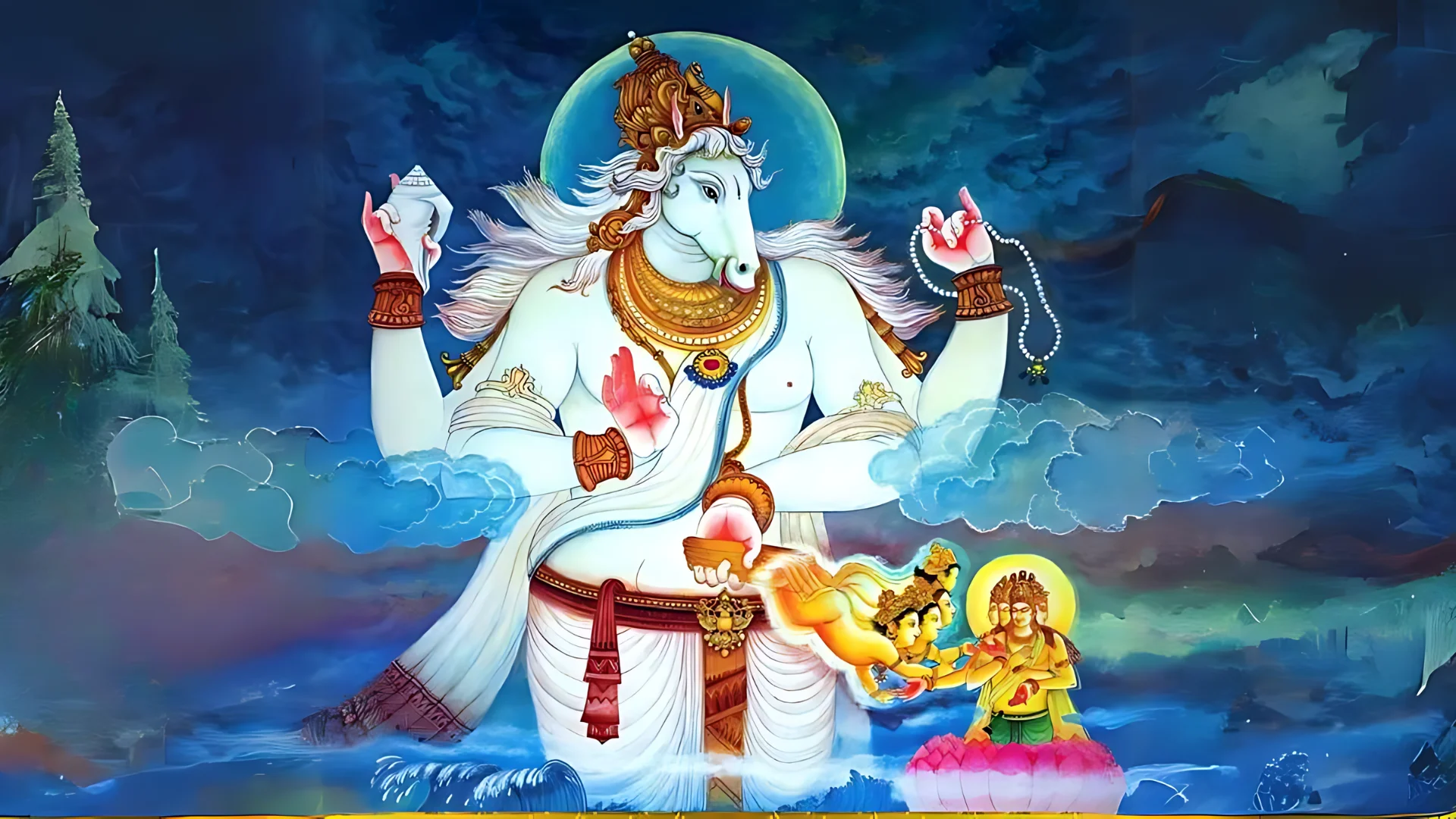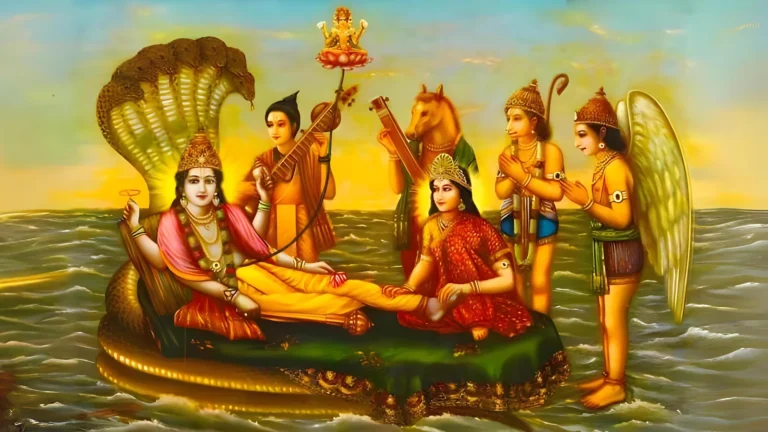Please Like the Blog and Share it for Maximum Reach
Table of Contents
Lord Hayagriva in the Mahabharata
Lord Hayagriva is one of the lesser-known incarnations of Lord Vishnu. He finds mention in several texts including the epic Mahabharata. Regarding Lord Hayagriva, the great Sauti mentions the details that Sage Vaishampayana had delivered to Janmejaya during the massive snake sacrifice.
Birth of Sri Brahma, Madhu and Kaitabha
Before the commencement of creation, Lord Narayana lay in a state of Yoga Nidra (meditative slumber). In that state, the Lord thinks of creation. Thus, when time and the universe were born at that moment, from the navel of Lord Narayana sprung Sri Brahma, mounted on top of a Lotus.
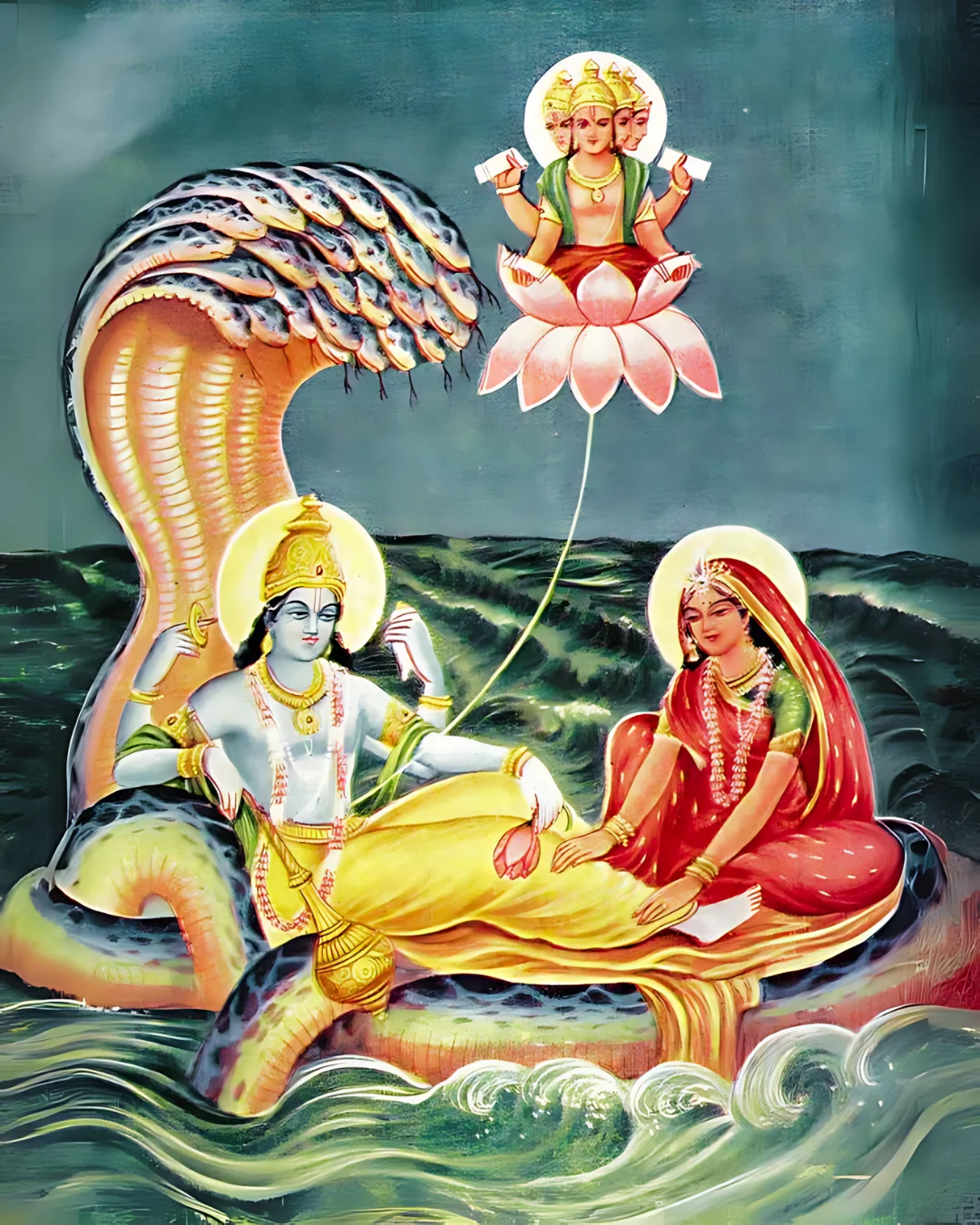
Initially, Sri Brahma was incompetent and ignorant of his origin. He meditated for several years and finally attained the knowledge of the Vedas which are described as the very breath of Bhagawan. Without the Vedas, no creation is possible. It is the life force that runs the creation.
Now, Sri Brahma endowed with Sattvic qualities begins creation. However, the corruption of individuality and claiming ownership afflicted Sri Brahma. He took pride in being the creator of the Universe.
To bring the creator to reality, by the will of Sri Narayana, two drops of water appeared on the lotus of Sri Brahma. One drop that resembled honey transformed into a dreadful Daitya called Madhu. Similarly, the sight of the Lord transformed the other drop into the demon Kaitabha. These two demons represented the two inferior modes of material nature namely Rajas and Tamas.
Madhu and Kaitabha Steal the Vedas
Madhu and Kaitabha emerged in the same lotus as Sri Brahma. They posed him a major threat as they became imbued with diabolical intentions and complemented with immeasurable might and weaponry. After causing havoc in the primeval lotus they arrived at the spot where Lord Brahma was engaged in creation, with the help of the 4 Vedas.
The Daityas usurped the sublime Vedas (who appeared as handsome babies), far from sight into the depths of the cosmic waters.
The unanticipated loss of the Vedas afflicted Sri Brahma with acute sorrow. Finding himself impaired now in the absence of the Vedas, Sri Brahma approached his Master, Sriman Narayana.
He prayed filled with emotion, crying out to the Lord for help. In his prayers, Sri Brahma describes the Vedas as His eyes. Without them, he would be bereft of sight. His world, at the moment, became engulfed in eternal darkness.
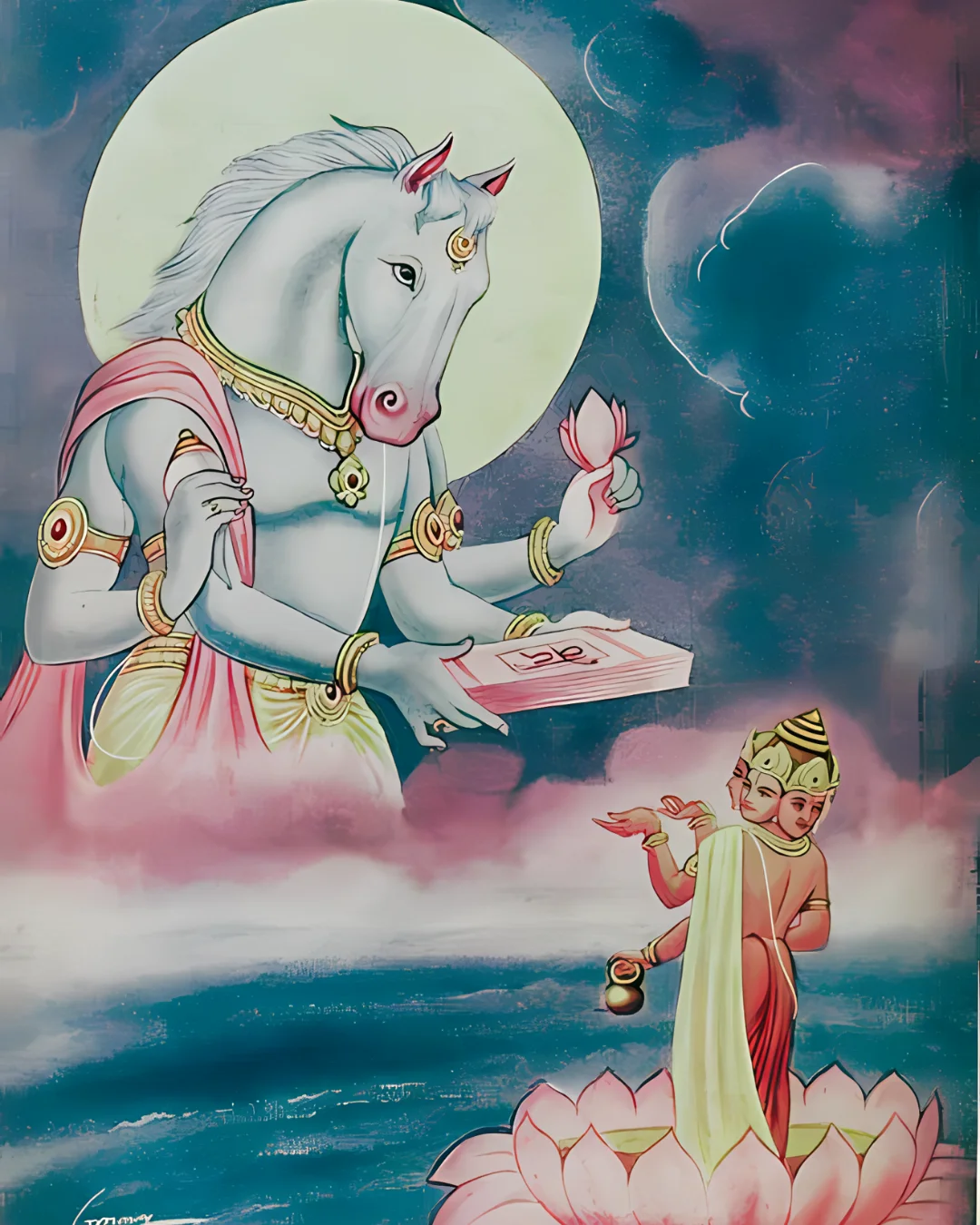
He thus urged his master to restore the Vedas. The words filled with anguish, moved the universal Lord into a state of activity. Through his innate Yogic powers, he assumed one of his most eloquent, ancient forms, characterized by an equine head, the Hayagreeva Avatar.
References of the Lord Hayagriva Avatar
The name has two root Sanskrit words- Haya meaning Horse and greeva-neck.
The Rishis hail this dominant form of the Lord which finds mention in many scriptures like the Bhagavata Purana Canto 10 Chapter 40. Akrura pays his obeisances to the various incarnations of Narayana wherein he includes the name of Sri Hayagriva as the slayer of Madhu and Kaitabha.
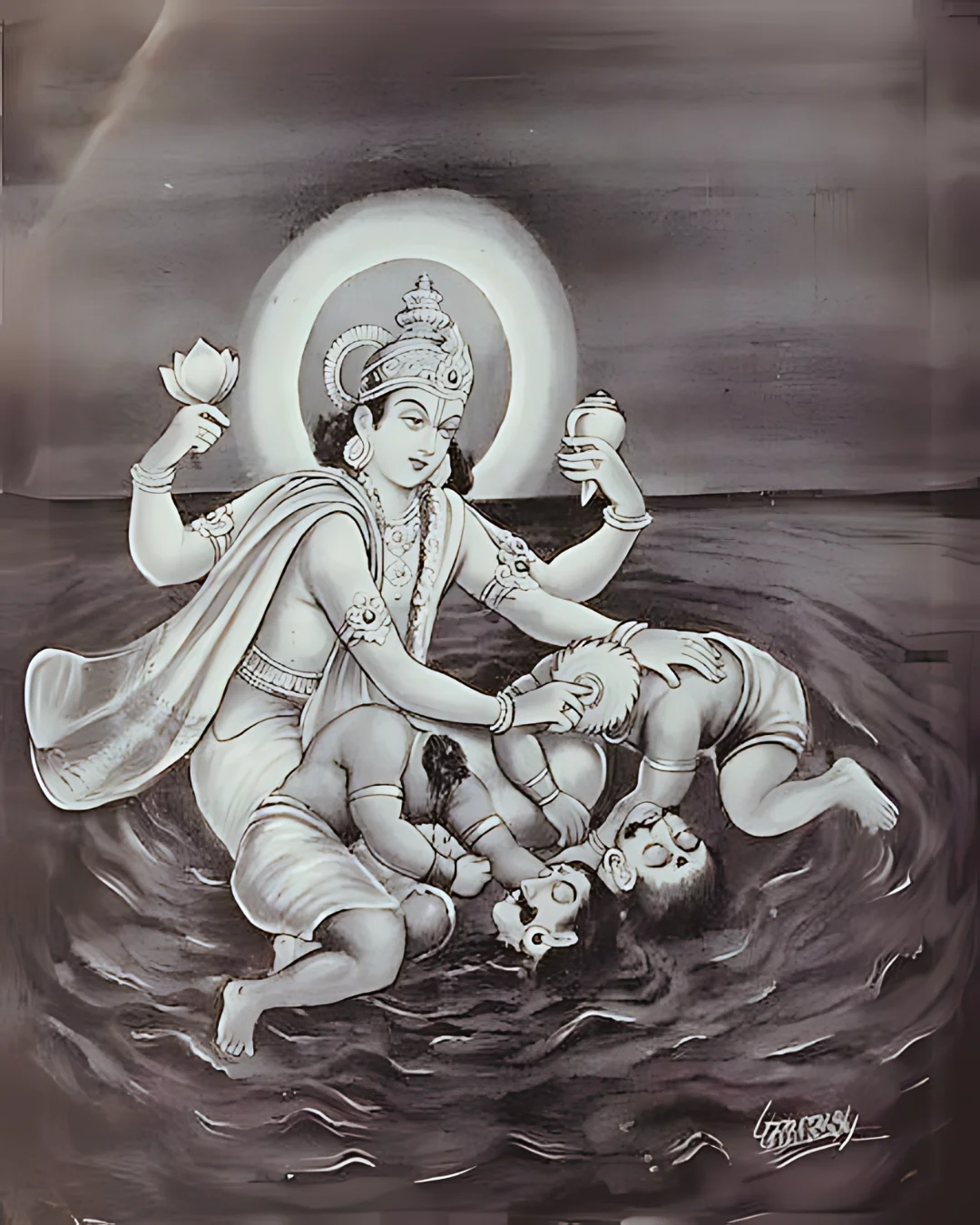
Similarly, Garuda Purana (a sacred text for the Vaishnavas), consecrates Sri Hayagriva as the deity of Knowledge, wisdom and an epitome of compassion. Viṇṣu Dharmottara Purāṇa a Vaishnava text describes the heroic moment of Lord Hayagriva restoring the Vedas, for Sri Brahma and humanity.
Other Sakta, Tantrik and Saiva texts like Devī Bhāgavata Purāṇa, Kālikā Purāṇa, Skanda Purana, Brahmāṇḍa Purāṇa also mentions Lord Hayagriva. However, these texts revolve around Devi/Lord Shiva and thus, Lord Hayagriva, an avatar of Lord Vishnu plays a secondary role. He has an instrumental role in fulfilling the boons of the aforesaid deities. In these texts, His origin is an outcome of the Will of Devi Mahamaya. Thus, the aim of the pastimes in these sects differ completely from that of the Vaishnava texts.
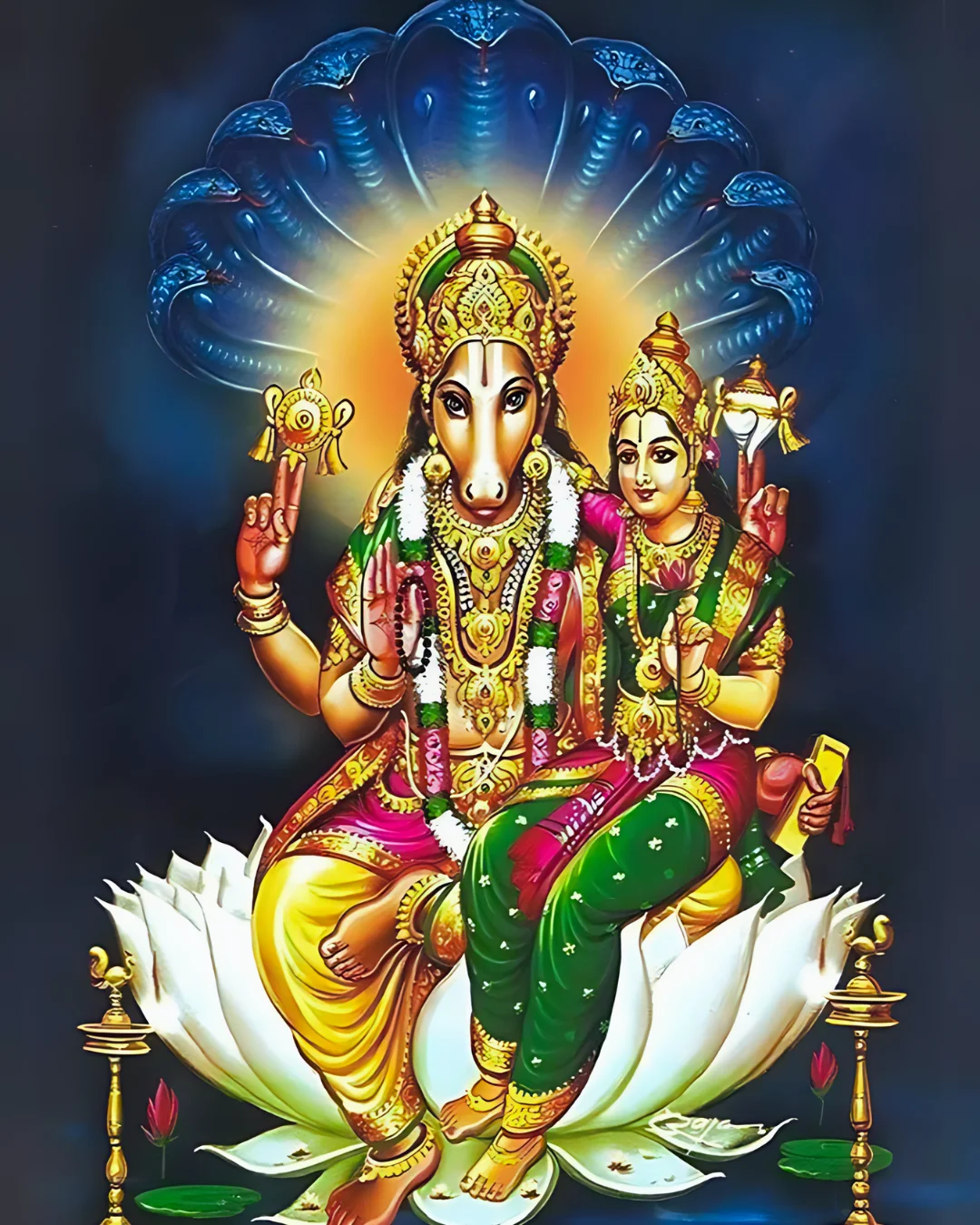
Sri Vaishnava saints have described the glorious form of Lord Hayagriva. There are many Temples dedicated to Yoga Hayagriva and Lakshmi Hayagriva in the South of India.
7/8 Questions from Sanatana Dharma
The scores generated in this Quiz may or may not be absolute. There may be right or wrong answers to each Question. A percentage towards 100 indicates that you are more aligned to the overall subject matter.
The Glorious Description of Lord Hayagriva
The equine head of the Lord adorns a flawless long nose. He has a crystal white complexion, which surpasses the luminosity of a million suns. He is an embodiment of the cosmos.
His divine body houses the sacred Ganges, Saraswati, the sun, moon, earth, constellations, Goloka, Brahmaloka, the upper and lower worlds. The constant remembrance of Lord Hayagriva’s divine form in no less than a Vedic ritual. Sri Hayagriva’s memory is verily the primordial sound vibration Om.
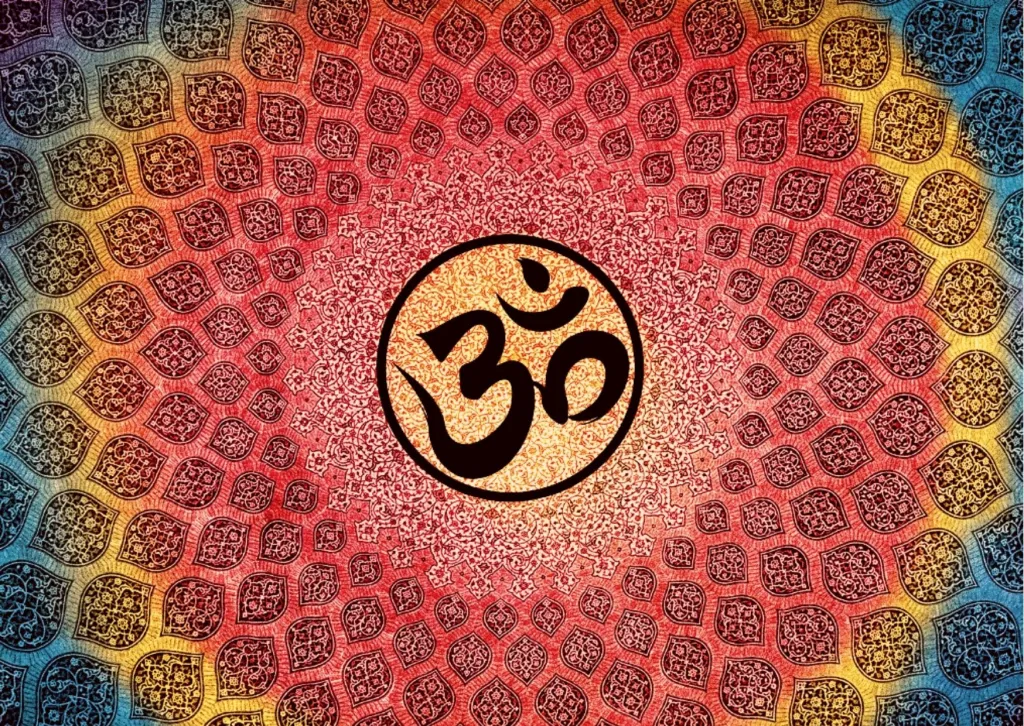
His locks of hair sways and shines like the rays of the sun. To elate Sri Brahma, the Lord immediately vanished from the spot and approached nether worlds. The Lord, auspicious, produced an expressive method of reciting the Vedic Mantras.
His sound amplified and the sweetness of his voice echoed end to end in the nether worlds. The thundering voice petrified Madhu-Kaitabha. In haste, they hid the Vedas in the nether regions and tried to trace the origin of the sound. To their dismay, they found nothing. However, Lord Hayagriva in the meantime discovered the Vedas and delivered them to Sri Brahma.
As an iconography of this moment, the Viṇṣu Dharmottara Purāṇa describes Lord Hayagariva with 8 hands. His 4 hands are traditional hallmarks of Sriman Narayana, adorned with the Shanka, Chakra, Gada and Padma. The remaining 4 hands hold the 4 Vedas each.
Lord Hayagriva: The Slayer of Madhu and Kaitabha
Now back to the pastime, the duo-Danava brothers returned to the spot where they had hidden the Vedas. They found the Vedas missing. In a fit of rage, they soared up to the primeval lotus from which they sprang. Seeing the Asuras marching towards the lotus, Sri Brahma sought refuge under Lord Narayana.
Madhu-Kaitabha who were evolutions of Rajas and Tamas intended to engage in a combat with the Supreme Lord. The impartial Lord, prepared to fulfill their desire. A fierce battle ensued, with Sriman Narayana on one hand and the duo brothers on the other. The battle concluded with the annihilation of the two demons, Madhu and Kaitabha. Thus, Sriman Narayana equipped with the equine had the name Madhusudhana (slayer of Madhu) and Kaitabhajita (the conqueror of Kaitabha).
Hidden Interpretation of the Pastime of Lord Hayagriva
Horses are extremely intelligent animals. The Lord assumed the head of a fresh white horse, showing pure wisdom. He held the vedas in His hands and delivered them to Sri Brahma.
When the creator of the material universe, Sri Brahma finds himself incompetent without the help of the Vedas, how can man possibly succeed without them. The hidden interpretation is that only pure wisdom can empower an individual to create and diversify.
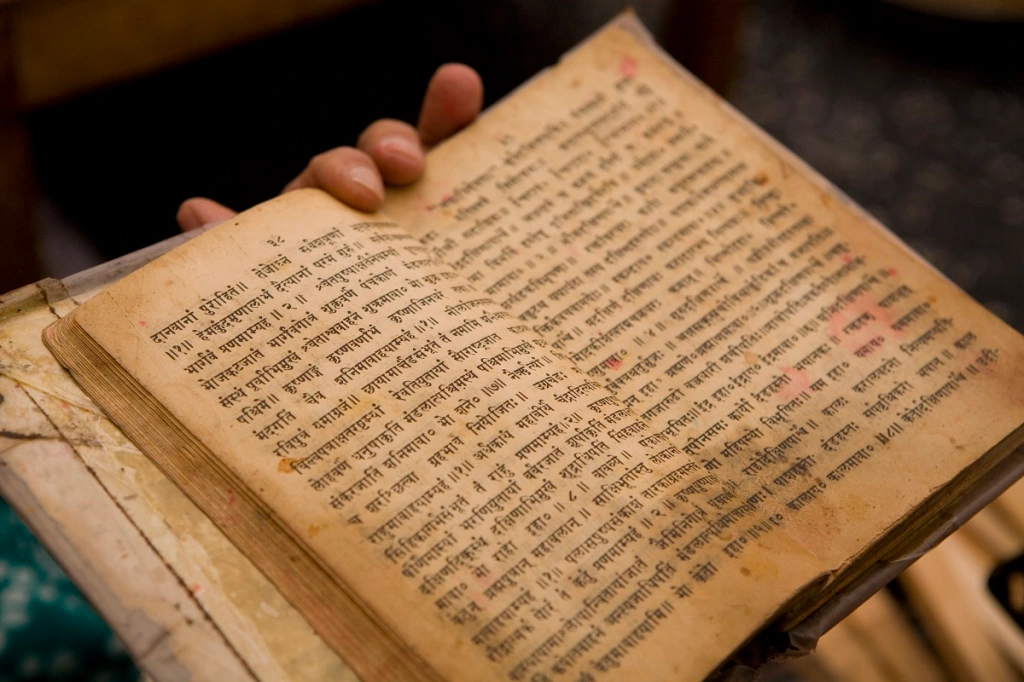
How do we apply this in practical life? Suppose one wants to expand their business. One must scan one’s intentions and weigh them on the scale of Dharma. Any decision taken for personal benefit at the cost of harming others is to be avoided. For example, starting a liquor business might seem profitable.
But, on Vedic terms it stands no ground. So, one must never venture in such lines of business. Thus, pure wisdom always safeguards the interests of the soul, though it might not seem very appealing to the mind.
In conclusion, human Beings naturally have the tendency to create and expand. But, creation can only hold value when built on the foundation of the Vedas. Our way of life and our decisions should be in line with Dharma and Satya and not instigated by the flimsy mind that only sees personal benefit.
Anything that is an evolute of the mind, that is rooted in the mode of Rajas and Tamas (as in demons Madhu and Kaitabha) gets eventually annihilated by pure wisdom (Lord Hayagriva).
Please Like the Blog and Share it for Maximum Reach

